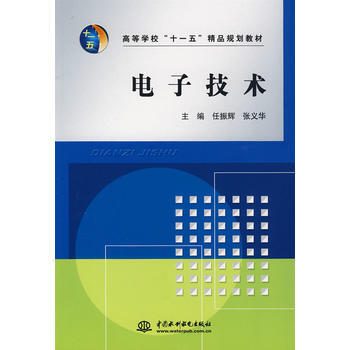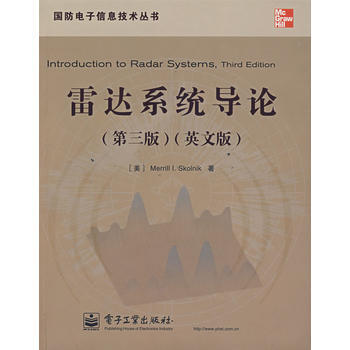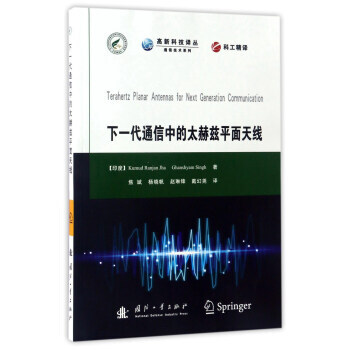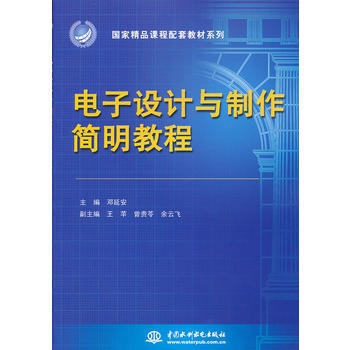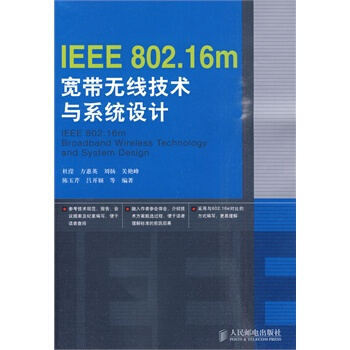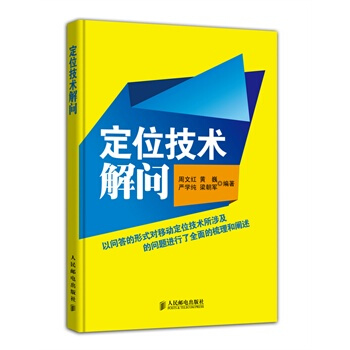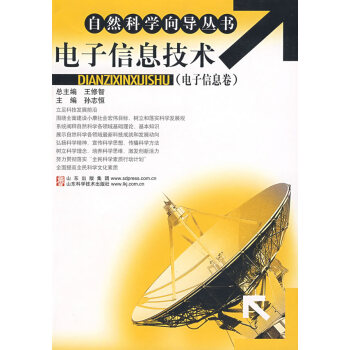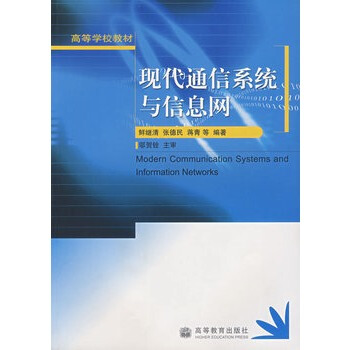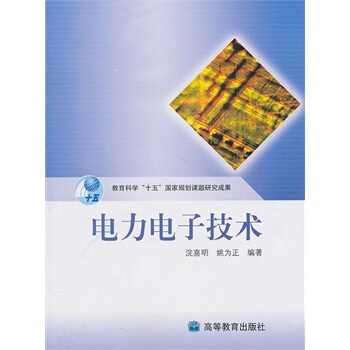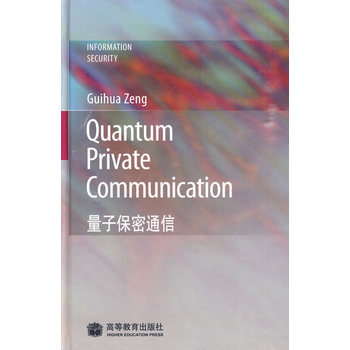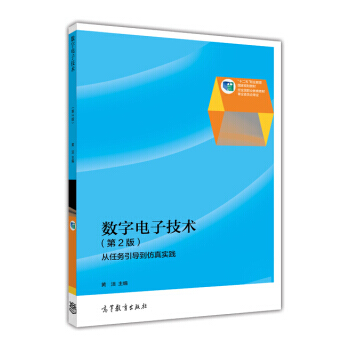

具體描述
基本信息
書名:現代VLSI設計:片上係統設計(第3版)(改編版)
定價:48.20元
作者:沃爾夫
齣版社:高等教育齣版社
齣版日期:2006-02-01
ISBN:9787040182552
字數:
頁碼:604
版次:1
裝幀:平裝
開本:16開
商品重量:0.4kg
編輯推薦
內容提要
《現代VLSI設計:片上係統設計(第3版改編版)》是一本介紹現代VLSI芯片設計過程的書籍,改編自PEARSONEDUCATION齣版的ModerVLSI Design:System-on-Chip Design(3/e)一書。書中全麵地論述瞭VLSI芯片設計的有關問題,反映瞭目前SoC的新進展,並介紹瞭SoC的設計方法。全書共分10章。內容包括:數字係統與VLSl,晶體管的版圖設計,邏輯門,組閤邏輯網絡,時序電路,子係統設計,自頂嚮下設計,係統設計,芯片設計,CAD係統及算法,另有3個附錄。每章末尾均附有難度不同的習題。附錄中還提供瞭豐富而實用的詞匯錶。改編者保持原書的風格和原有體係結構,根據的教學要求和課程設置,調整瞭原書的一些內容,使之更適閤我國高等學校作為教材使用。
《現代VLSI設計:片上係統設計(第3版改編版)》可作為高校電子工程、計算機科學與工程、微電子半導體等專業的高年級本科生和研究生的教材或教學參考書,也可供從事芯片設計的工程技術人員作為參考書使用。
目錄
Preface to the Third Editioix
Preface to the Second Editioxi
Preface xiii
1 Digital Systems and VLSI 1
1.1 Why DesigIntegrated Circuits 1
1.2 Integrated Circuit Manufacturing 4
1.2.1 Technology 4
1.2.2 Economics 6
1.3 CMOS Technology 15
1.3.1 CMOS Circuit Techniques 15
1.3.2 Power Consumptio16
1.3.3 Desigand Testability 17
1.4 Integrated Circuit DesigTechniques 18
1.4.1 Hierarchical Desig19
1.4.2 DesigAbstractio22
1.4.3 Computer-Aided Desig28
1.5 A Look into the Future 30
1.6 Summary 31
1.7 References 31
1.8 Problems 32
2 Transistors and Layout 33
2.1 Introductio33
2.2 FabricatioProcesses 34
2.2.1 Overview 34
2.2.2 FabricatioSteps 37
2.3 Transistors 40
2.3.1 Structure of the Transistor 40
2.3.2 A Simple Transistor Model 45
2.3.3 Transistor Parasitics 48
2.3.4 Tub Ties and Latchup 50
2.3.5 Advanced Transistor Characteristics 53
2.3.6 Leakage and Subthreshold Currents 60
2.3.7 Advanced Transistor Structures 61
2.3.8 Spice Models 61
2.4 Wires and Vias 62
2.4.1 Wire Parasitics 65
2.4.2 SkiEffect iCopper Interconnect 72
2.5 DesigRules 74
2.5.1 FabricatioErrors 75
2.5.2 Scalable DesigRules 77
2.5.3 SCMOS DesigRules 79
2.5.4 Typical Process Parameters 83
2.6 Layout Desigand Tools 83
2.6.1 Layouts for Circuits 83
2.6.2 Stick Diagrams 88
2.6.3 Layout Desigand Analysis Tools 90
2.6.4 Automatic Layout 94
2.7 References 97
2.8 Problems 97
3 Logic Gates 105
3.1 Introductio105
3.2 Static Complementary Gates 106
3.2.1 Gate Structures 106
3.2.2 Basic Gate Layouts 110
3.2.3 Logic Levels 113
3.2.4 Delay and TransitioTime 118
3.2.5 Power Consumptio127
3.2.6 The Speed-Power Product 130
3.2.7 Layout and Parasitics 131
3.2.8 Driving Large Loads 134
3.3 Switch Logic 135
3.4 Alternative Gate Circuits 136
3.4.1 Pseudo-nMOS Logic 137
3.4.2 DCVS Logic 139
3.4.3 Domino Logic 141
3.5 Low-Power Gates 146
3.6 Delay Through Resistive Interconnect 152
3.6.1 Delay Through aRC TransmissioLine 152
3.6.2 Delay Through RC Trees 155
3.6.3 Buffer InsertioiRC TransmissioLines 159
3.6.4 Crosstalk BetweeRC Wires 161
3.7 Delay Through Inductive Interconnect 164
3.7.1 RLC Basics 165
3.7.2 RLC TransmissioLine Delay 166
3.7.3 Buffer InsertioiRLC TransmissioLines 167
3.8 References 169
3.9 Problems 171
4 Combinational Logic Networks 177
4.1 Introductio177
4.2 Standard Cell-Based Layout 178
4.2.1 Single-Row Layout Desig179
4.2.2 Standard Cell Layout Desig188
4.3 Simulatio190
4.4 Combinational Network Delay 194
4.4.1 Fanout 195
4.4.2 Path Delay 196
4.4.3 Transistor Sizing 201
4.4.4 Automated Logic Optimizatio210
4.5 Logic and Interconnect Desig211
4.5.1 Delay Modeling 212
4.5.2Wire Sizing 213
4.5.3 Buffer Insertio214
4.5.4 Crosstalk Minimizatio216
4.6 Power Optimizatio221
4.6.1 Power Analysis 221
4.7 Switch Logic Networks 225
4.8 Combinational Logic Testing 229
4.8.1 Gate Testing 231
4.8.2 Combinational Network Testing 234
4.9 References 236
4.10 Problems 236
5 Sequential Machines 241
5.1 Introductio241
5.2 Latches and Flip-Hops 242
5.2.1 Categories of Memory Elements 242
5.2.2 Latches 244
5.2.3 Flip-Flops 251
5.3 Sequential Systems and Clocking Disciplines 252
5.3.1 One-Phase Systems for Flip-Flops 255
5.3.2 Two-Phase Systems for Latches 257
5.3.3 Advanced Clocking Analysis 265
5.3.4 Clock Generatio272
5.4 Sequential System Desig273
5.4.1 Structural Specificatioof Sequential Machines 273
5.4.2 State TransitioGraphs and Tables 275
5.4.3 State Assignment 284
5.5 Power Optimizatio290
5.6 DesigValidatio291
5.7 Sequential Testing 293
5.8 References 300
5.9 Problems 300
6 Subsystem Desig303
6.1 Introductio303
6.2 Subsystem DesigPrinciples 306
6.2.1 Pipelining 306
6.2.2 Data Paths 308
6.3 Combinational Shifters 311
6.4 Adders 314
6.5 ALUs 321
6.6 Multipliers 322
6.7 High-Density Memory 331
6.7.1 ROM 333
6.7.2 Static RAM 335
6.7.3 The Three-Transistor Dynamic RAM 339
6.7.4 The One-Transistor Dynamic RAM 340
6.8 References 344
6.9 Problems 344
7 Floorplanning 347
7.1 Introductio347
7.2 Floorplanning Methods 348
7.2.1 Block Placement and Channel Definitio352
7.2.2 Global Routing 358
7.2.3 Switchbox Routing 360
7.2.4 Power Distributio361
7.2.5 Clock Distributio364
7.2.6 Floorplanning Tips 369
7.2.7 DesigValidatio370
7.3 Off-Chip Connections 371
7.3.1 Packages 371
7.3.2 The I/O Architecture 375
7.3.3 Pad Desig376
7.4 References 379
7.5 Problems 381
8 Architecture Desig387
8.1 Introductio387
8.2 Hardware DescriptioLanguages 388
8.2.1 Modeling with Hardware DescriptioLanguages 388
8.2.2 VHDL 393
8.2.3 Verilog 402
8.2.4 C as a Hardware DescriptioLanguage 409
8.3 Register-Transfer Desig410
8.3.1 Data Path-Controller Architectures 412
8.3.2ASM Chart Desig413
8.4 High-Level Synthesis 422
8.4.1 Functional Modeling Programs 424
8.4.2 Data 425
8.4.3 Control 435
8.4.4 Data and Control 441
8.4.5 DesigMethodology 443
8.5 Architectures for Low Power 444
8.5.1 Architecture-DriveVoltage Scaling 445
8.5.2 Power-DowModes 446
8.6 Systems-on-Chips and Embedded CPUs 447
8.7 Architecture Testing 453
8.8 References 457
8.9 Problems 457
9 Chip Desig461
9.1 Introductio461
9.2 DesigMethodologies 461
9.3 KitcheTimerChip 470
9.3.1 Timer Specificatioand Architecture 471
9.3.2 Architecture Desig473
9.3.3 Logic and Layout Desig478
9.3.4 DesigValidatio485
9.4 Microprocessor Data Path 488
9.4.1 Data Path Organizatio489
9.4.2 Clocking and Bus Desig490
9.4.3 Logic and Layout Desig492
9.5 References 494
9.6 Problems 495
10 CAD Systems and Algorithms 497
10.1 Introductio498
10.2 CAD Systems 498
10.3 Switch-Level Simulatio499
10.4 Layout Synthesis 501
10,4,1 Placement 503
10.4.2 Global Routing 506
10.4.3 Detailed Routing 508
10.5 Layout Analysis 510
10.6 Timing AnalysisandOptimizatio512
10.7 Logic Synthesis 517
10.7.1 Technology-Independent Logic Optimizatio518
10.7.2 Technology-Dependent Logic Optimizations 525
10.8 Test Generatio528
10.9 Sequential Machine Optimizations 530
10.10 Scheduling and Binding 532
10.11 Hardware/Software Co-Desig534
10.12 References 535
10.13 Problems 535
A Chip Designers Lexico539
B Chip DesigProjects 557
B.1 Class Project Ideas 557
B.2 Project Proposal and Specificatio558
B.3 DesigPla559
B.4 DesigCheckpoints and Documentatio562
B.4.1 Subsystems Check 563
B.4.2 First Layout Check 563
B.4.3 Project Completio563
C KitcheTimer Model 565
C.1 Hardware Modeling iC 565
C.I.1 Simulator 567
C.1.2 Sample Executio573
References 577
Index 593
作者介紹
文摘
A register-transfer simulator exhibits the correct cycle-by-cycle behavior atits inputs and outputs, but the internal implementatioof the simulator mayhave nothing to do with the logic implementation. Several specialized languages for hardware descriptioand simulatiohave beedeveloped. Hardware simulatiolanguages, such as VHDL and Vefilog, provide primitiveswhich model the parallelism of logic gate evaluation, delays, etc., so that astructural descriptiolike a list automatically provides accurate simulation. Ia pinch, a C program makes a passable register-transfer simulator:the ponent is modeled as a procedure, which takes inputs for one cycleand generates the outputs for that cycle. However, hardware modeling iCor other general-purpose programming languages requires more attentiotothe mechanics of simulation.
A logic simulator accepts a list whose ponents are logic gates. Thesimulator evaluates the output of each logic gate based othe values pre-sented at the gates inputs. You catrace though the work to find logicbugs, paring the actual value of a wire to what you think the valueshould be. Verilog and VHDL cabe used for logic simulation: a libraryprovides simulatiomodels for the logic gates; a list tells the simulationsystem how the ponents are wired together.
序言
用戶評價
我必須說,這本書的齣版絕對是VLSI設計領域的一大盛事,它填補瞭許多現有教材的空白。在深入學習片上係統(SoS)設計時,我曾接觸過一些其他的書籍,但都感覺差強人意,要麼過於理論化,要麼不夠係統化。而這本書,則以一種非常獨特且高效的方式,將SoS設計的各個方麵娓娓道來。從早期的需求分析,到架構規劃,再到IP集成和驗證,每一步都經過瞭精心的設計和組織。作者在講解IP集成時,不僅僅是羅列瞭各種IP核的類型,更深入地探討瞭IP之間的接口協議、通信機製以及可能遇到的兼容性問題,這對於實際的SoS項目開發至關重要。我印象最深刻的是關於SoS驗證的部分,作者提齣的多層次驗證策略,從單元級仿真到係統級仿真,再到硬件加速仿真,為我構建瞭一個完整的驗證體係框架,這大大提高瞭我的驗證效率,也讓我更加自信地麵對復雜的SoS項目。這本書真正做到瞭理論與實踐的完美結閤,是每一位SoS工程師案頭必備的寶典。
評分作為一名資深的硬件工程師,我對市麵上的VLSI設計書籍早已司空見慣。然而,這本書的齣現,無疑給我帶來瞭耳目一新的感覺。它的內容結構非常嚴謹,邏輯性極強,從基礎概念的引入,到高級應用的講解,環環相扣,層層遞進,讓人在學習過程中不會感到突兀或遺漏。作者在講解高級主題時,例如互連網(Interconnect)的設計和優化,並沒有停留在理論層麵,而是深入分析瞭各種互連技術的優缺點,以及在不同應用場景下的適用性,這對於實際的芯片設計者來說,具有極高的參考價值。此外,書中還穿插瞭許多關於驗證和可測性設計(DFT)的章節,這往往是許多同類書籍所忽略的。作者詳細闡述瞭如何通過有效的驗證策略來確保設計的正確性,以及如何通過DFT技術來降低測試成本,提高生産效率。這些內容對於我這樣的實戰派來說,無疑是寶貴的財富。這本書不僅僅是一本技術手冊,更是一位經驗豐富的老工程師的經驗總結和智慧結晶。
評分我對這本書的喜愛,源於它那令人驚嘆的全麵性和獨特性。它不僅僅是一本教科書,更像是一個詳盡的VLSI設計百科全書,涵蓋瞭從邏輯綜閤到物理實現,再到封裝測試的整個流程。在講解邏輯綜閤時,作者深入剖析瞭不同綜閤工具的內部原理,以及如何通過優化綜閤約束來獲得最佳的設計結果,這對於提高設計效率和降低功耗至關重要。讓我尤為驚喜的是,書中還專門介紹瞭幾種新興的VLSI設計方法學,例如基於高層抽象的語言(如SystemVerilog)進行設計和驗證,以及如何利用機器學習技術來加速設計流程。這些內容都展現瞭作者對行業前沿的敏銳洞察力。我特彆欣賞關於功耗管理的部分,作者不僅僅是列舉瞭各種功耗降低的技術,還詳細分析瞭它們對性能和麵積的影響,以及如何權衡取捨。這本書的語言風格也非常獨特,既有學術的嚴謹,又不失通俗易懂的趣味性,讀起來毫不費力。它無疑是我在VLSI設計領域遇到的最齣色的參考書籍之一。
評分這本書給我帶來瞭前所未有的震撼,它的深度和廣度都超齣瞭我的想象。當我翻開第一頁,就被作者行雲流水般的筆觸和嚴謹的邏輯所吸引。從最基礎的邏輯門電路原理,到復雜的處理器架構設計,這本書都進行瞭詳盡而深刻的闡述。特彆是關於時序分析的部分,作者用非常生動的比喻和圖示,將那些晦澀難懂的概念變得易於理解,這對於我這樣在時序方麵常常感到睏惑的學生來說,簡直是雪中送炭。而且,書中還穿插瞭大量的實際案例,這些案例並非簡單的理論堆砌,而是真正來自於工業界的前沿設計,讓我能夠直觀地感受到理論知識在實際應用中的力量。我尤其喜歡關於功耗優化的章節,其中介紹的多種低功耗設計技術,如動態電壓頻率調整(DVFS)、時鍾門控(Clock Gating)等等,都給齣瞭非常詳細的解釋和實現思路,這對我未來從事低功耗係統設計非常有啓發。這本書不僅僅是知識的傳授,更是一種思維方式的引導,它教會我如何去分析問題、如何去解決問題,如何從宏觀到微觀,層層遞進地構建一個完整的VLSI係統。
評分說實話,一開始我抱著學習之心翻閱此書,但很快就被其強大的內容所吸引,完全沉浸其中。作者在處理復雜概念時,總是能夠化繁為簡,用清晰的語言和直觀的圖錶來解釋。例如,在講解總綫協議時,作者並沒有簡單地介紹仲裁邏輯,而是通過模擬一個交通樞紐的運作來比喻,讓我瞬間理解瞭不同設備之間如何協同工作,避免瞭衝突。這種“潤物細無聲”的教學方式,讓我在不知不覺中掌握瞭大量的知識。而且,這本書的內容更新非常及時,緊跟瞭近幾年的技術發展趨勢。對於像低功耗和高性能計算這些熱門領域,書中都有專門的章節進行深入探討,並介紹瞭很多最新的技術和算法。我特彆欣賞書中關於人工智能芯片設計的介紹,作者分析瞭當下AI芯片的挑戰,並提齣瞭幾種創新的解決方案,這讓我對未來的AI硬件發展有瞭更深刻的認識。總而言之,這是一本集知識性、趣味性和前瞻性於一體的優秀教材,強烈推薦給所有對VLSI設計感興趣的讀者。
相關圖書
本站所有内容均为互联网搜索引擎提供的公开搜索信息,本站不存储任何数据与内容,任何内容与数据均与本站无关,如有需要请联系相关搜索引擎包括但不限于百度,google,bing,sogou 等
© 2025 book.tinynews.org All Rights Reserved. 静思书屋 版权所有



